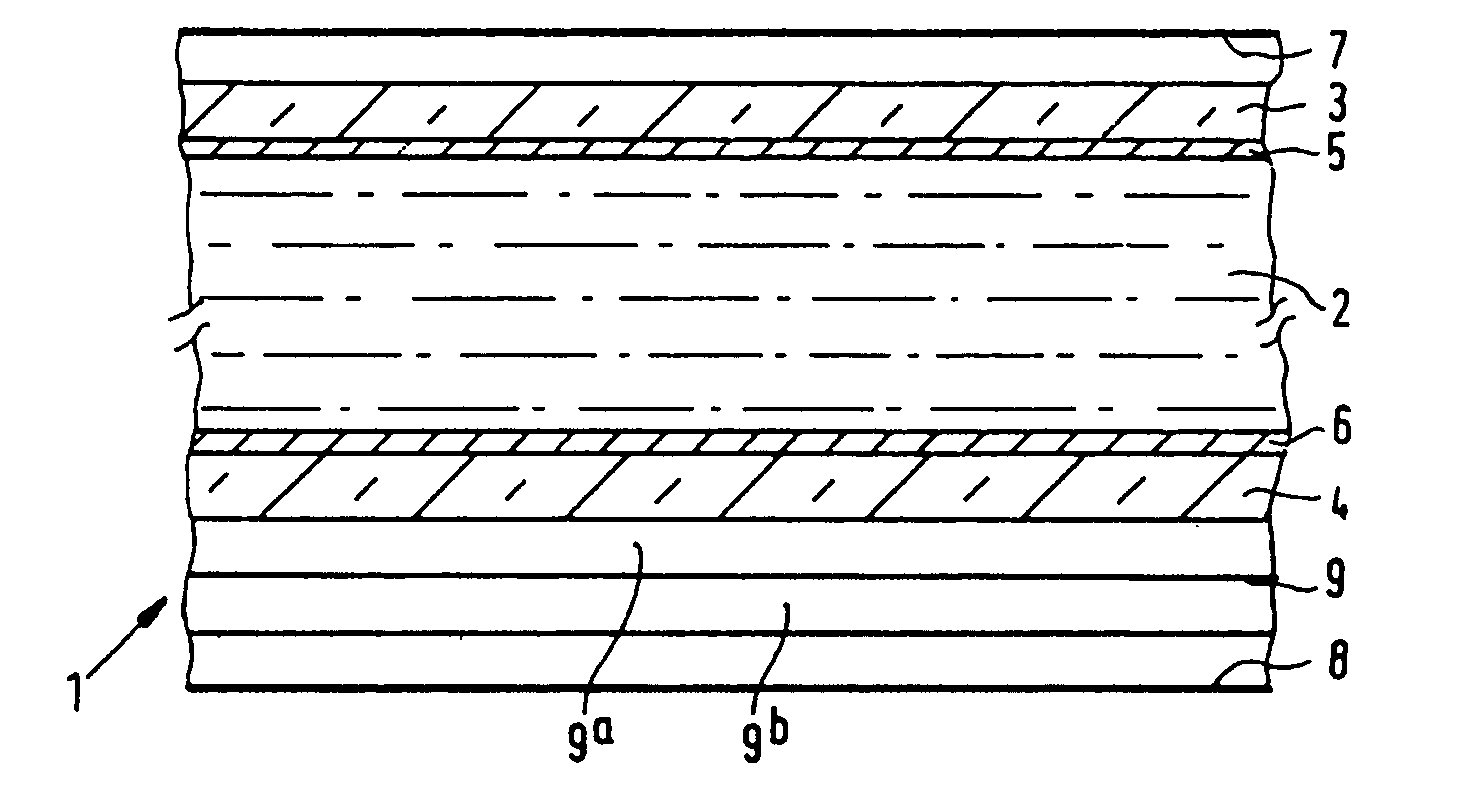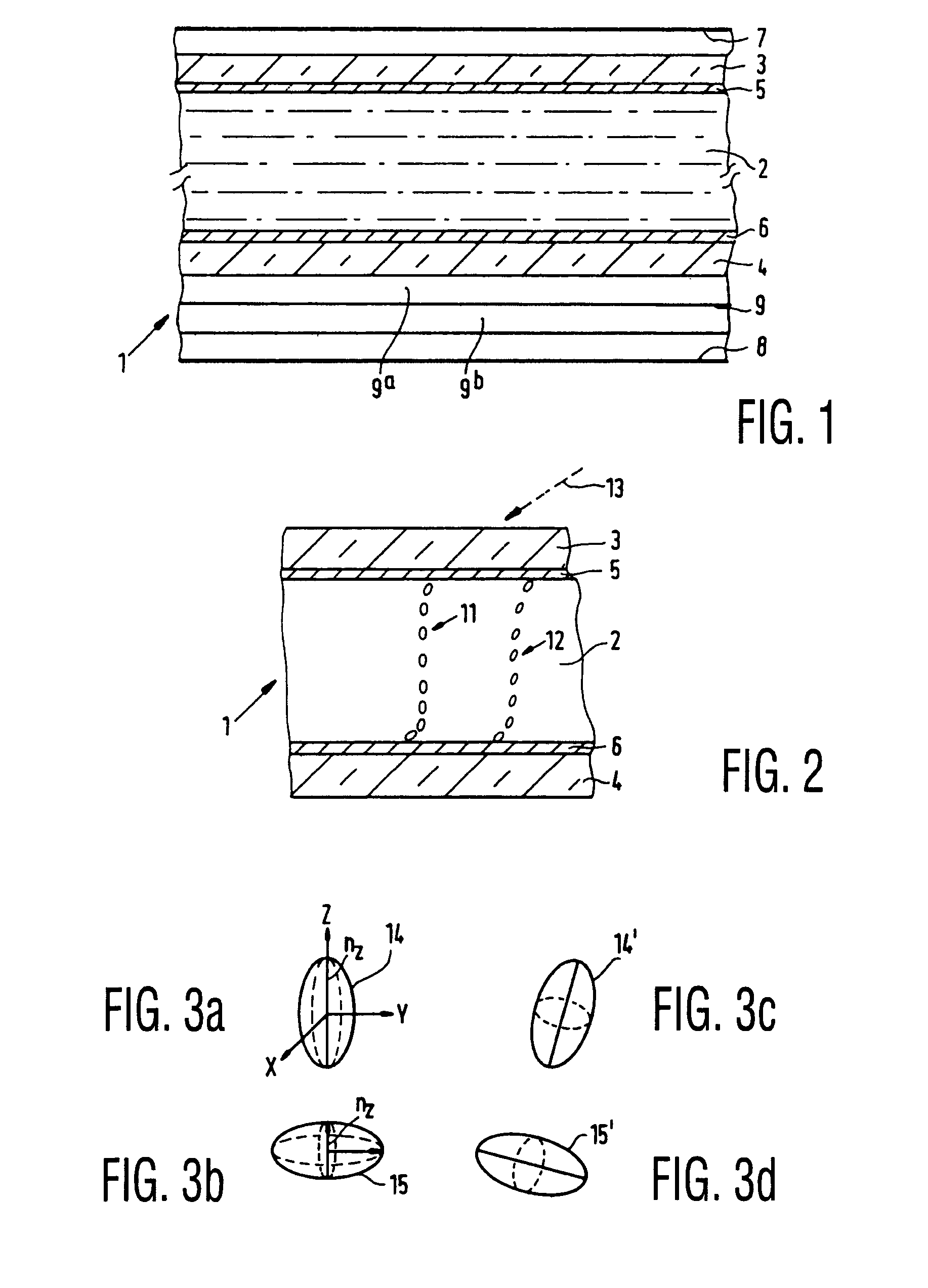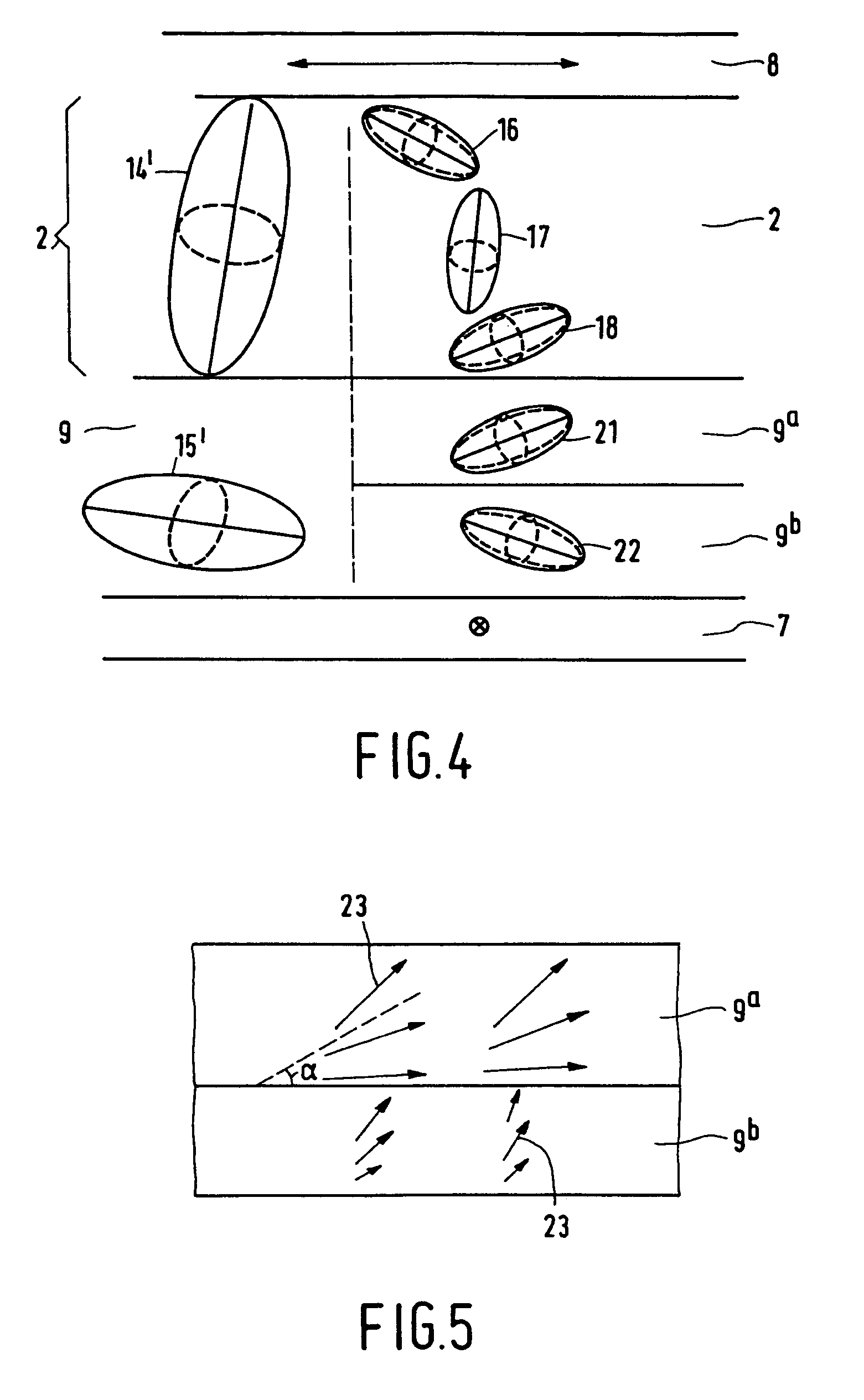Method of manufacturing a compensator layer with retardation foils exhibiting tilt angles parallel to planes normal to the foils and angled with respect to one another
a technology of retardation foils and compensators, which is applied in the direction of polarising elements, instruments, chemistry apparatuses and processes, etc., can solve the problems of redundant treatment with electric fields to induce tilt and great angle dependence of display devices comprising such compensators, and achieves excellent processing and small temperature dependence of optical properties. , the effect of favorable
- Summary
- Abstract
- Description
- Claims
- Application Information
AI Technical Summary
Benefits of technology
Problems solved by technology
Method used
Image
Examples
Embodiment Construction
[0037]FIG. 1 is a schematic, cross-sectional view of a part of a liquid-crystal display device comprising a liquid-crystal cell 1 with a twisted nematic, liquid-crystal material 2 sandwiched between two substrates 3, 4, for example, of glass, which are provided with electrodes 5, 6. The device further comprises two polarizers 7, 8 whose directions of polarization intersect each other at right angles. The cell further includes orientation layers (not shown), which orient the liquid-crystal material on the inner surfaces of the substrates, in this example, in the direction of the polarization axes of the polarizers, so that the cell has a twist angle of 90 degrees. In this case, the liquid-crystal material has a positive optical anisotropy and a positive dielectric anisotropy. If a voltage is applied to the electrodes 5, 6, the molecules and hence the directors are oriented in accordance with the field. Thus, in an ideal case, all molecules extend substantially perpendicularly to both...
PUM
| Property | Measurement | Unit |
|---|---|---|
| tilt angles | aaaaa | aaaaa |
| angle | aaaaa | aaaaa |
| angle | aaaaa | aaaaa |
Abstract
Description
Claims
Application Information
 Login to View More
Login to View More - R&D
- Intellectual Property
- Life Sciences
- Materials
- Tech Scout
- Unparalleled Data Quality
- Higher Quality Content
- 60% Fewer Hallucinations
Browse by: Latest US Patents, China's latest patents, Technical Efficacy Thesaurus, Application Domain, Technology Topic, Popular Technical Reports.
© 2025 PatSnap. All rights reserved.Legal|Privacy policy|Modern Slavery Act Transparency Statement|Sitemap|About US| Contact US: help@patsnap.com



